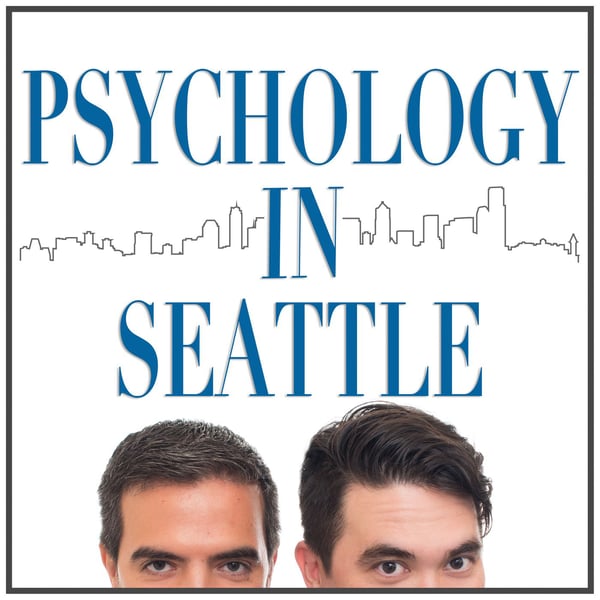Attachment Emails
Psychology In Seattle Podcast
Kirk Honda
4.6 • 1.2K Ratings
🗓️ 4 October 2021
⏱️ 113 minutes
🧾️ Download transcript
Summary
Become a patron: https://www.patreon.com/PsychologyInSeattle
Email: https://www.psychologyinseattle.com/contact
Get merch: https://teespring.com/stores/psychology-in-seattle
Dr. Kirk’s Cameo: https://www.cameo.com/kirkhonda
Instagram: https://www.instagram.com/psychologyinseattle/
Discord: https://discord.gg/6QR4sE8x9K
Reddit: https://www.reddit.com/r/PsychologyInSeattle/
Twitter: https://twitter.com/PsychInSeattle
Facebook Official Page: https://www.facebook.com/PsychologyInSeattle/
Facebook Fan Page (run by fans): https://www.facebook.com/groups/112633189213033
The Psychology In Seattle Podcast ®
Trigger Warning: This episode may include topics such as assault, trauma, and discrimination. If necessary, listeners are encouraged to refrain from listening and care for their safety and well-being.
Disclaimer: The content provided is for educational, informational, and entertainment purposes only. Nothing here constitutes personal or professional consultation, therapy, diagnosis, or creates a counselor-client relationship. Topics discussed may generate differing points of view. If you participate (by being a guest, submitting a question, or commenting) you must do so with the knowledge that we cannot control reactions or responses from others, which may not agree with you or feel unfair. Your participation on this site is at your own risk, accepting full responsibility for any liability or harm that may result. Anything you write here may be used for discussion or endorsement of the podcast. Opinions and views expressed by the host and guest hosts are personal views. Although, we take precautions and fact check, they should not be considered facts and the opinions may change. Opinions posted by participants (such as comments) are not those of the hosts. Readers should not rely on any information found here and should perform due diligence before taking any action. For a more extensive description of factors for you to consider, please see www.psychologyinseattle.com
This show is part of the Spreaker Prime Network, if you are interested in advertising on this podcast, contact us at https://www.spreaker.com/show/3269717/advertisement
Transcript
Click on a timestamp to play from that location
| 0:00.0 | Hey, Deserve and Listeners, it's just me today. I thought I would answer a bunch of interesting |
| 0:04.9 | emails about attachment. The first email is from Aperture Patron Heather from New England. She says, |
| 0:12.2 | Could you talk a bit about reactive attachment disorder? My cousin is 18 and adopted |
| 0:18.5 | and is diagnosed with reactive attachment disorder. Her behavior and emotional struggles are |
| 0:24.4 | many and severe. Will this condition ever be able to be controlled and of email? Okay, |
| 0:31.0 | so let's look into a reactive attachment disorder. And I thought I'd also go into |
| 0:35.8 | its companion disorder in the DSM-5 disinhibited social engagement disorder as well. |
| 0:42.3 | So let me just talk about those. And if you want more detail on this, listen to my attachment |
| 0:47.9 | deep dive, which is available at patrons only. Okay, DSM-5, reaction, reactive attachment disorder, |
| 0:55.7 | basically someone with some one diagnosed with reactive attachment disorder would probably |
| 1:02.8 | also be observed to be disorganized attachment if you're familiar. Could be extreme avoidant, |
| 1:08.8 | but usually disorganized. Reactive attachment disorder, the symptoms are failure to seek comfort. |
| 1:16.8 | They avoid eye contact. You know, these are children. So that the child will just never reach out |
| 1:23.7 | to caregivers. They don't have a lot of eye contact. Frozen watchfulness is described, |
| 1:30.8 | meaning that they seem like they're remaining very still, but they're hypervigilant at the same |
| 1:38.8 | time. They will have unpredictable reunion responses, meaning that when the child is reunited with |
| 1:45.6 | their caregivers, the behavior from the child will be unpredictable. In that, the child will sometimes |
| 1:53.6 | celebrate the reunion, sometimes be terrified, sometimes ignore. But essentially, the DSM-5 doesn't |
| 2:02.0 | really describe reactive attachment disorder very well. So let me describe it in its essence. |
| 2:09.4 | These children, for very logical reasons of abuse and neglect, are terrified of caregivers |
| 2:18.4 | and avoid attachments. They don't trust caregivers and they seem, they can seem completely detached. |
| 2:25.8 | And often it's a result of massive attachment disruption that can occur during adoption. |
... |
Please login to see the full transcript.
Disclaimer: The podcast and artwork embedded on this page are from Kirk Honda, and are the property of its owner and not affiliated with or endorsed by Tapesearch.
Generated transcripts are the property of Kirk Honda and are distributed freely under the Fair Use doctrine. Transcripts generated by Tapesearch are not guaranteed to be accurate.
Copyright © Tapesearch 2025.

